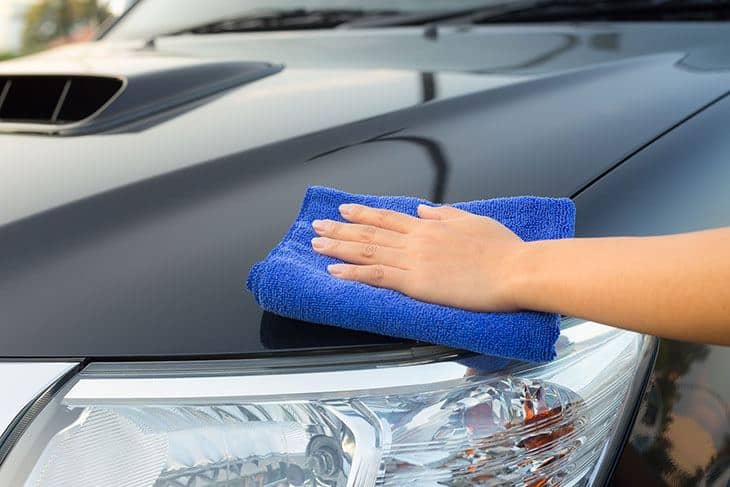When you are driving out in your car on the road, you are either going for a short or long trip. In both cases, there are elements of uncertainty and unpredictability. That’s why checking your car before a trip is helpful.
You generally want to check the tire pressure and tread, gas levels, oil level and condition, lights, dashboard gauge, and windshield wipers before you go long distances. If you know about or suspect any car issues, check and fix them before you travel.
These items and others will help you prevent issues while on the road. The following are a few tips that will take you a long way on your journey by car in an uninterrupted, safe, and smooth manner.
How to Check Your Car Before Driving?
1. Check the Fuel and Fluid Levels
According to the intended distance of your destination, you have to plan your fuel. Check the fuel content of your fuel tank and plan the fuel you need to fill up from the next fuel situation. While doing your fuel planning, you should consider your car’s average fuel consumption.
Besides you should also check the brake fluid, coolant, and windscreen wash levels. Refer to your Owner’s Manual and check where the fuel reservoirs are located. Besides your clutch fluid, check the power steering fluid.
2. Check the Air Pressure
The maximum air pressure of your tires is mentioned in your Owner’s Manual. It is also mentioned in the body where the driver’s doors shut. Ensure that the pressure of the tires is maintained at the maximum level and does not exceed it. Ensure that the spare tire is at its maximum level because that will save you from a lot of trouble or even standing in case the running tire gets punctured.
3. Change the Oil of Your Car

If you are going on a long trip, it is essential that you change the oil of your car; as otherwise, your motor may be subjected to additional stress. You may be thinking that since you have added extra oil earlier, an oil change may not be required. But that is a misconception.
Moreover, since you are continuously adding cleaner oil, the oil may look clean, and you may not be bothered about a complete oil change. If you are going on a long trip, this is the right time to change the oil. Never forget to change the oil filter when you are changing the oil.
4. Check the Lights and Signals

Take the help of another person to check the lights and signals of your car. Sitting in the car, turn on each light and signal and ask the person if the particular light or signal is working or not.
In case you find some not working, replace the bulb. It will still be better to carry some spare bulbs for headlights, tail lights, indicators, and reversing lights. Since changing to front lights takes time, don’t leave its replacement till the last moment.
Sometimes, the light may not work because a fuse may require replacement. Also, check the alignment of your headlights by using a garage door. Adjust the alignment if you find it incorrect because poor headlight alignment may reduce visibility at night, particularly if the road is not lit.
5. Check the Air Filter

An adequate supply of clean air to your engine gives better performance and efficiency, particularly if your car is on a long trip. Therefore, besides checking the air filter, change the cabin filter or pollen filter of your car. If not properly serviced, it may cause the supply of poor-quality of air to your car cabin.
6. Check the Windows and Wiper Blades
Clean the windows of your car for the best visibility. Check the condition of the wiper blades and replace the same with a new one, if you find it necessary.
7. Check the Tread of the Tire
The tread of the tire must be at a minimum of 1/16th of an inch or 1.6 mm. In case you find the tire tread less than 1/12″ or 2.5mm, you may consider replacing the same, particularly for a long trip by car. While on long trips and with consistent movement, the tires may heat up and even cause blowouts.
8. Carry Emergency Equipment

The emergency equipment of the car includes a spare tire, cell phone, updated route map, flashlight, pliers, screwdriver, adjustable spanner, first-aid kits, and fire extinguisher. Also, carry the mandatory Reflective Warning Triangle if you are moving to a member state of the European Union (EU).
In case you are moving to a right-hand driving state, ensure that your beam detector is working well so that other road users are not dazzled with your right-hand driving.
9. Check the Engine Temperature Gauge

Check the gauge before you start a long trip. Check the engine’s temperature gauge after the engine has time to warm.
10. Check the Temperature Controlling Systems

Check the heating system, vents, and air-conditioning system to confirm that they are working well. This enables you to defrost or defog their windows whenever required.
11. Check the Battery

Even if a mechanic checks the terminals of the battery and if you find any defect, replace the same immediately.
Driving Tips for Winter
Driving in adverse winter weather calls for a different driving acumen from what is required for usual driving. The basic adverse elements are less sunlight, continued heavy snowfall, and floods. The following are the tips for driving in winter:
1. Prepare Your Vehicle

Prepare your vehicle to have clean lights, a fully charged battery, a clean window screen, wiper blades, tread and pressure of the tires, perfect brakes, and fluids for washing the windscreen. Carry tow rope, shovel, Wellington boots, de-icing equipment, first-aid kits, a car blanket, warm clothes, working torch, and emergency rations.
2. Prepare Your Journey
Collect the present and future weather bulletin related to the area of your proposed journey. You can get it from the national or local weather bulletin. As the weather condition may change quickly, you must depend upon the latest forecast. If the too-bad weather is predicted with warning signals, you may consider canceling or postponing the trip.
3. Prepare Yourself
Tell a closer person where you are going so that he can alarm you if you don’t return in time. You may choose an alternative route if your original route is impassable. Make your fuel tank full. Have a fully charged mobile phone so that any emergent situation could be communicated. You may undergo specific training for driving in rough weather and terrain.
4. How to Drive in Snow?

Reduce your speed to avoid any chance of skidding. Drive at a speed at which you can bring your vehicle to stop at a visible distance. Slow down at places wherever required. Sudden braking may cause your car to spin. Keep an adequate distance from the front vehicle.
5. Getting Stuck in Snow
When stuck, don’t try to revive your engine to go forward. Instead, move your car backward and forward by applying the highest gear. If nothing works, then ask the help of a passerby to push the car forward.
6. Caught In a Snow Drift
Instead of leaving your car there, call your breakdown service. Avoid running the engine to keep it warm.
7. Strong Winds
Sit quiet, keeping both your hands on the steering wheel, and expect sudden gusts of wind, particularly with the passing of high-speed vehicles. Avoid driving over bridges.
You should use jumper cables when your car is stuck for the battery to get discharged. Find a boosting car and keep both the cars closer and clamp the red jumper cable to the positive terminal of the dead car and, similarly, the negative terminals; till your battery is charged and jumpstarted.
Just as you should look before you jump, you should check before your start your car to go out for a long trip.

